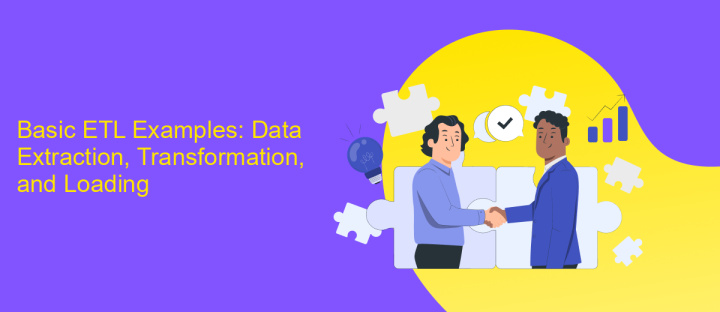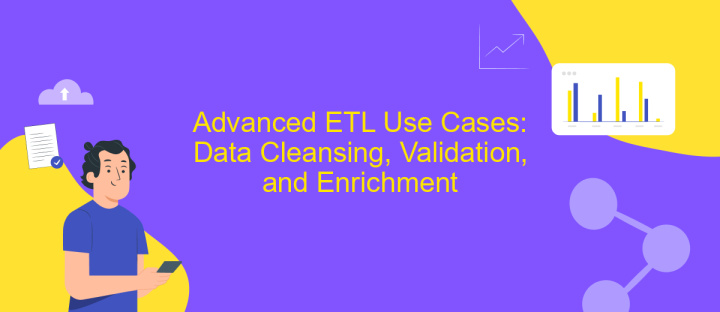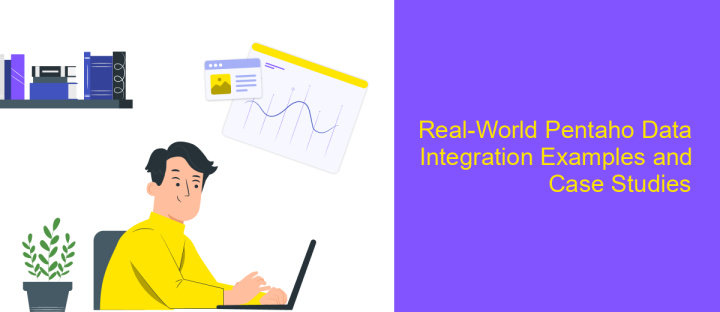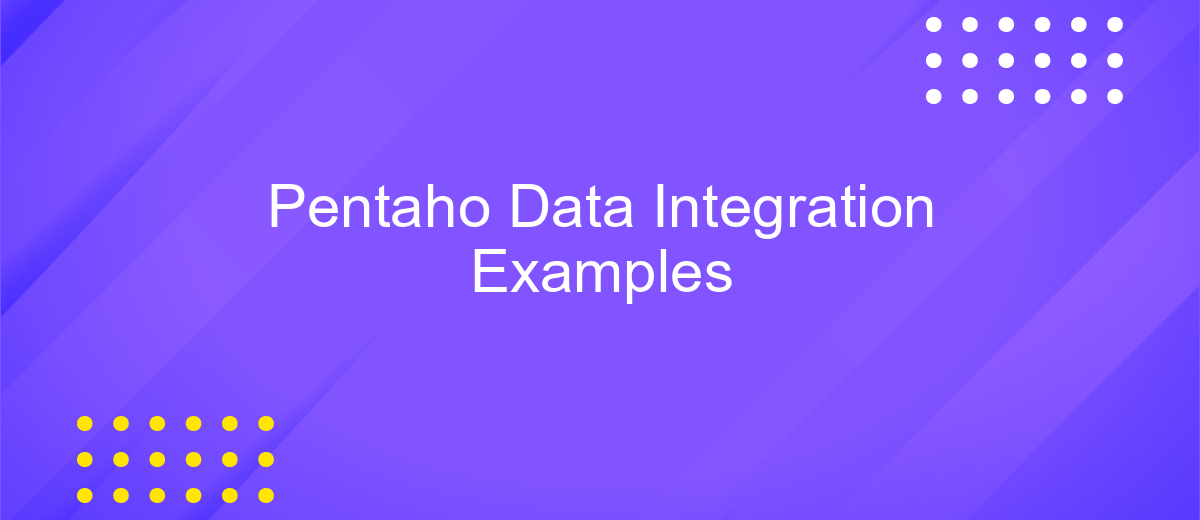Pentaho Data Integration Examples
Pentaho Data Integration (PDI) is a powerful, open-source tool that simplifies the process of data manipulation and transformation. This article explores various examples of how PDI can be utilized to streamline data workflows, enhance data quality, and support informed decision-making. Whether you're dealing with complex data migrations or routine ETL tasks, these examples will demonstrate the flexibility and efficiency of PDI in addressing diverse data challenges.
Introduction to Pentaho Data Integration (PDI)
Pentaho Data Integration (PDI), commonly known as Kettle, is a powerful open-source tool designed for data integration and transformation. It provides a robust platform for extracting, transforming, and loading (ETL) data from various sources into a centralized data warehouse. PDI is an essential component of the Pentaho suite, offering a user-friendly interface and a wide range of functionalities to cater to diverse data processing needs.
- Visual interface: PDI offers an intuitive drag-and-drop interface, allowing users to design complex data workflows without extensive coding.
- Scalability: It supports large-scale data processing, making it suitable for both small and enterprise-level applications.
- Extensibility: With a rich set of plugins, PDI can be extended to meet specific business requirements.
- Integration: Seamlessly connects with various data sources, including databases, cloud services, and big data platforms.
PDI empowers organizations to streamline their data processes, ensuring accurate and timely information for decision-making. By leveraging its capabilities, businesses can enhance their data management strategies, improve operational efficiency, and gain valuable insights from their data assets. Its open-source nature and community support make it a cost-effective solution for modern data integration challenges.
Basic ETL Examples: Data Extraction, Transformation, and Loading

Data extraction is the initial step in the ETL process, where raw data is collected from various sources such as databases, spreadsheets, or web services. In Pentaho Data Integration, users can easily connect to these data sources and retrieve the necessary information for further processing. The platform supports a wide range of data formats and protocols, ensuring that users can extract data from virtually any system. For instance, ApiX-Drive can be used to automate and streamline the extraction process by integrating with multiple applications and services, allowing for seamless data flow.
Once the data is extracted, the transformation phase begins. This step involves cleaning, normalizing, and enriching the data to meet specific business requirements. Pentaho provides a robust set of transformation tools, enabling users to perform complex data manipulations with ease. Finally, the transformed data is loaded into a target system, such as a data warehouse or analytics platform, for further analysis. The loading process in Pentaho is highly configurable, ensuring that data is accurately and efficiently transferred to its final destination. This comprehensive ETL approach facilitates informed decision-making and enhances data-driven strategies.
Advanced ETL Use Cases: Data Cleansing, Validation, and Enrichment

Advanced ETL processes in Pentaho Data Integration (PDI) allow organizations to enhance their data workflows by incorporating data cleansing, validation, and enrichment techniques. These processes ensure that data is accurate, consistent, and valuable for decision-making. By leveraging PDI's capabilities, businesses can address complex data challenges effectively.
- Data Cleansing: Remove duplicates, correct errors, and standardize data formats to ensure consistency and accuracy.
- Data Validation: Implement rules and checks to verify data integrity, ensuring that only valid data is processed and stored.
- Data Enrichment: Enhance data by integrating additional information from external sources, providing deeper insights and context.
These advanced ETL use cases enable organizations to maximize the value of their data assets. By implementing data cleansing, validation, and enrichment processes, businesses can improve data quality, leading to more reliable analytics and informed decision-making. Pentaho Data Integration provides a robust platform to execute these tasks efficiently, ensuring that data-driven strategies are built on a solid foundation.
Real-World Pentaho Data Integration Examples and Case Studies

Pentaho Data Integration (PDI) is a powerful tool used by organizations across various industries to streamline their data processes. One notable example is a retail company that implemented PDI to integrate data from multiple sources, enhancing their inventory management system. By consolidating data, they achieved real-time insights into stock levels, leading to more efficient supply chain operations.
Another case study involves a healthcare provider that utilized PDI to merge patient data from different departments. This integration enabled the creation of a comprehensive patient profile, improving the accuracy of diagnoses and treatment plans. The seamless data flow also facilitated compliance with healthcare regulations by ensuring data consistency and integrity.
- A financial institution reduced data processing time by 40% using PDI for ETL operations.
- An e-commerce platform enhanced customer experience by integrating PDI to analyze purchasing patterns.
- A manufacturing firm improved production efficiency by integrating sensor data with PDI, enabling predictive maintenance.
These real-world examples demonstrate the versatility and effectiveness of Pentaho Data Integration in addressing diverse data challenges. By leveraging PDI, businesses can enhance decision-making, improve operational efficiency, and gain a competitive edge in their respective markets.
- Automate the work of an online store or landing
- Empower through integration
- Don't spend money on programmers and integrators
- Save time by automating routine tasks
Best Practices and Tips for Using Pentaho Data Integration
When working with Pentaho Data Integration (PDI), it's crucial to design your data transformations with efficiency in mind. Start by breaking down complex transformations into smaller, manageable steps. This modular approach not only simplifies debugging but also enhances reusability. Always use the latest version of PDI to take advantage of performance improvements and new features. It's also advisable to regularly monitor and optimize your data flow to prevent bottlenecks, ensuring smooth data processing.
Maximize the potential of PDI by integrating it with other tools and services. For instance, consider using ApiX-Drive to automate data transfers between applications, reducing manual effort and minimizing errors. ApiX-Drive can streamline the integration process, making it easier to maintain consistency across various data sources. Additionally, ensure that you have a robust backup and recovery strategy in place to safeguard your data transformations. Regularly test your processes to identify and address any potential issues before they impact your operations.
FAQ
What is Pentaho Data Integration (PDI)?
How can I automate data integration processes using Pentaho Data Integration?
What are some common examples of tasks you can perform with Pentaho Data Integration?
Can Pentaho Data Integration handle real-time data processing?
How does Pentaho Data Integration support different data sources?
Routine tasks take a lot of time from employees? Do they burn out, do not have enough working day for the main duties and important things? Do you understand that the only way out of this situation in modern realities is automation? Try Apix-Drive for free and make sure that the online connector in 5 minutes of setting up integration will remove a significant part of the routine from your life and free up time for you and your employees.


